My Complete Guide to Growing Amazing Lemon Cucumbers
I’ve been gardening for a long, long time, and I’ve seen countless plant fads come and go. But some plants just stick around for a reason. The lemon cucumber is one of them. The first time I ever planted one, I’ll be honest, I thought it was just a gimmick—something that looked cool but wouldn’t taste great. Boy, was I wrong. What I got was a super productive vine that quickly became a favorite in both my garden and my kitchen. This isn’t some modern hybrid; it’s a classic heirloom, which means it’s been passed down because it’s just a genuinely fantastic cucumber.
In this article
- Getting to Know Your Plant: What Makes a Lemon Cucumber Tick
- The Foundation: Picking a Spot and Prepping the Soil
- Perfect for Patios: Growing Lemon Cucumbers in Containers
- Planting: Getting Your Seeds in the Ground
- Support Systems: Why You Should Grow Vertically
- Watering and Feeding: Fuel for a Great Harvest
- The Best Part: Harvesting Your Cucumbers
- Troubleshooting Common Issues
- A Final Thought
- Galerie d’inspiration
This isn’t going to be one of those quick, generic tip lists. My goal here is to really walk you through the process, sharing the methods I’ve honed over years of growing thousands of these things. We’ll get into the ‘why’ behind each step, so you can actually understand what you’re doing and adapt it to your own space. Let’s get you growing lemon cucumbers with total confidence.
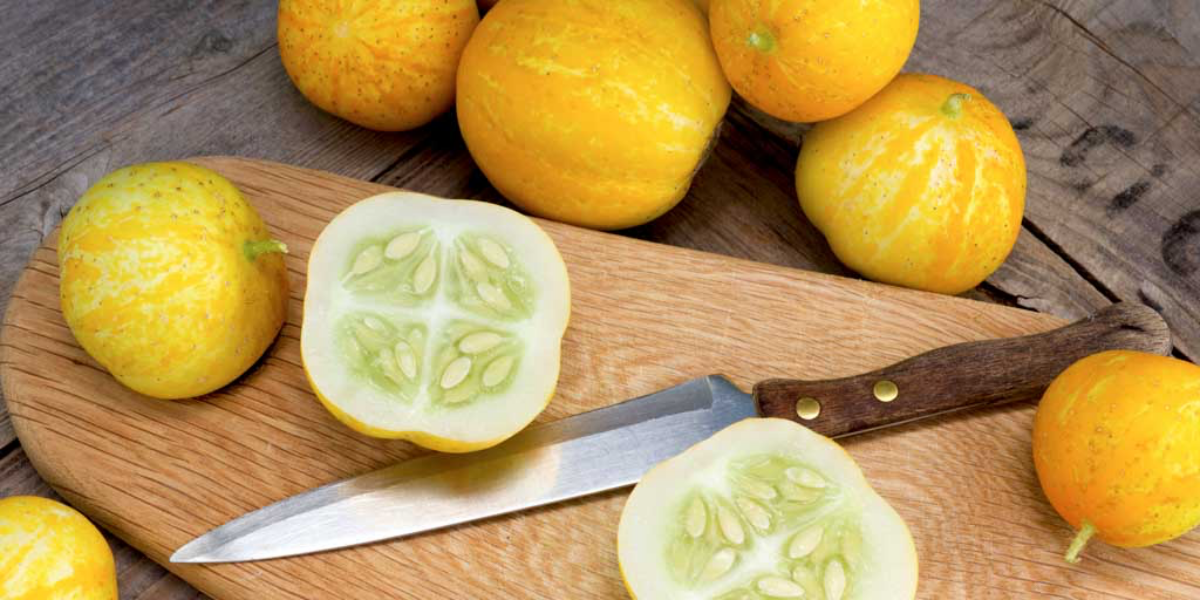
Getting to Know Your Plant: What Makes a Lemon Cucumber Tick
Before you even think about planting a seed, it helps to know what you’re dealing with. First off, a lemon cucumber is NOT a cross between a lemon and a cucumber. The name is purely about its looks—round and bright yellow when it’s ready to pick. The flavor is surprisingly mild, sweet, and wonderfully crisp, often with less of that bitterness you can sometimes get in green cucumbers.
By the way, because it’s an heirloom variety (its technical name is Cucumis sativus ‘Lemon’), it’s open-pollinated. This is a huge plus. It means you can save the seeds from your best cucumbers, plant them next year, and they’ll grow into the exact same type of plant. You can’t do that with most hybrid plants from the store. It’s a great way to be more self-sufficient in the garden.
The Deal with Bitter Cucumbers
Ever bite into a cucumber and get that awful, bitter taste? That’s caused by compounds called cucurbitacins. All cucumbers have them, and it’s basically a defense mechanism the plant uses when it gets stressed out. The two biggest stressors? Intense heat and, most importantly, inconsistent watering. Big swings from bone-dry soil to swampy conditions will almost guarantee a bitter harvest. While lemon cucumbers are naturally less prone to this, they aren’t immune. Our whole growing strategy is designed to keep the plant happy and stress-free.
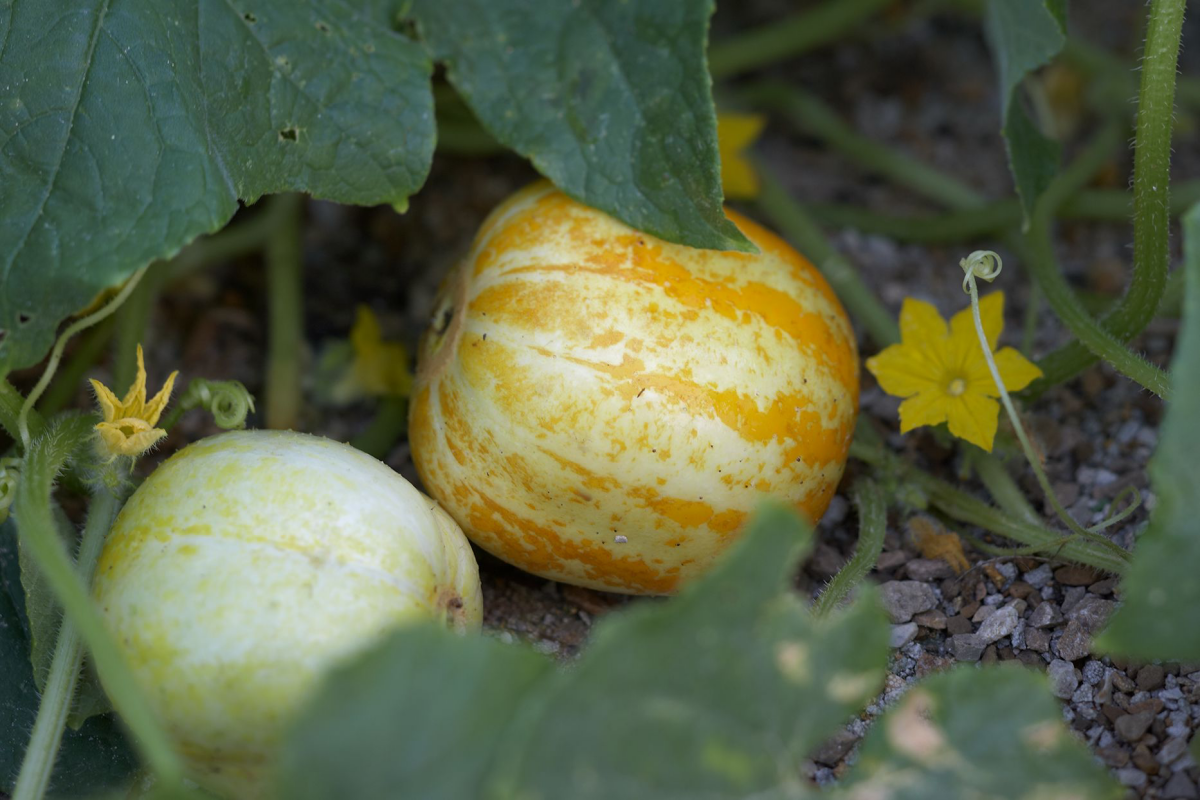
Good to know: From the day you plant the seed, you’re generally looking at about 60 to 70 days until your first harvest. Patience is key!
The Foundation: Picking a Spot and Prepping the Soil
You wouldn’t build a house on a shaky foundation, right? Same goes for gardening. The work you put in before you plant a single seed will have the biggest impact on your success. I’ve seen more crops fail from bad soil than from any pest or disease, guaranteed.
Choosing Your Location
Find the sunniest spot you’ve got. And I mean watch it all day long. A spot that’s sunny at 9 AM might be in shade by 2 PM. You’re looking for a solid 6 to 8 hours of direct sun. Airflow is another huge one. A spot with a gentle breeze helps leaves dry off quickly after rain or morning dew, which is your number one defense against fungal diseases like powdery mildew. Try to avoid planting right up against a solid wall or in a low, boggy corner of your yard.
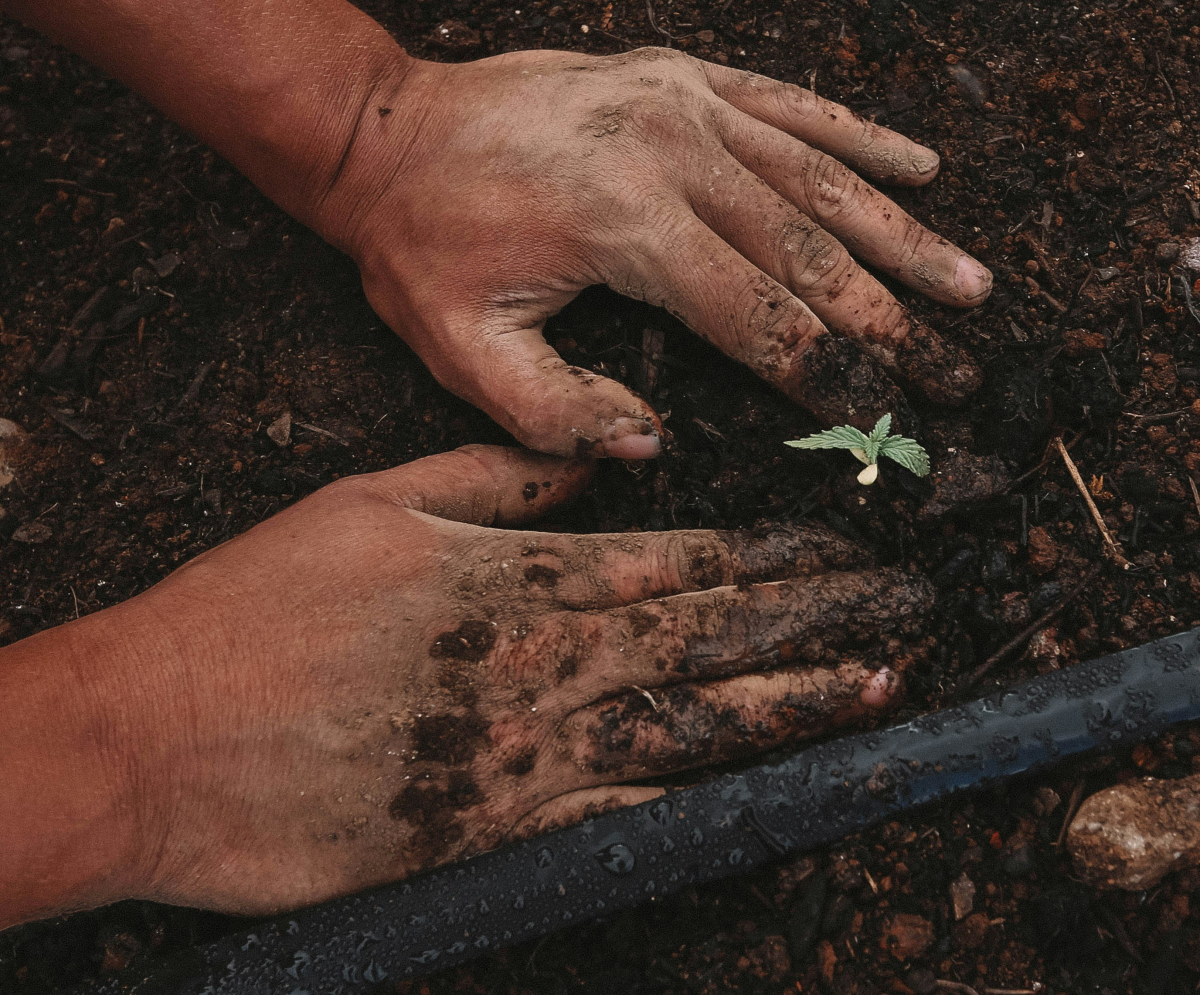
My Go-To Soil Recipe
Cucumbers are what we call “heavy feeders,” so they need rich soil to thrive. For a standard 4×8 foot raised bed, I always start by loosening up the existing soil with a garden fork. Then, I mix in the good stuff:
- Aged Compost: This is the magic ingredient. For a 4×8 bed, I’ll add two to three cubic feet. It adds nutrients, improves the soil texture, and helps hold moisture evenly. A big bag of quality compost will run you about $15-$20 at the garden center. Make sure it’s fully finished—it should look dark and crumbly and smell like good, clean earth.
- Balanced Organic Fertilizer: I mix in about two cups of a granular all-purpose blend (look for numbers like 4-4-4 on the bag). This gives the plants a slow-release food source. A 5lb bag usually costs around $15 and will last you a while.
Just work those amendments into the top 6-8 inches of your soil. The ideal soil pH for cucumbers is right around 6.0 to 6.8. You can grab a cheap soil test kit to see where you’re at. It’s a small step that can make a big difference.
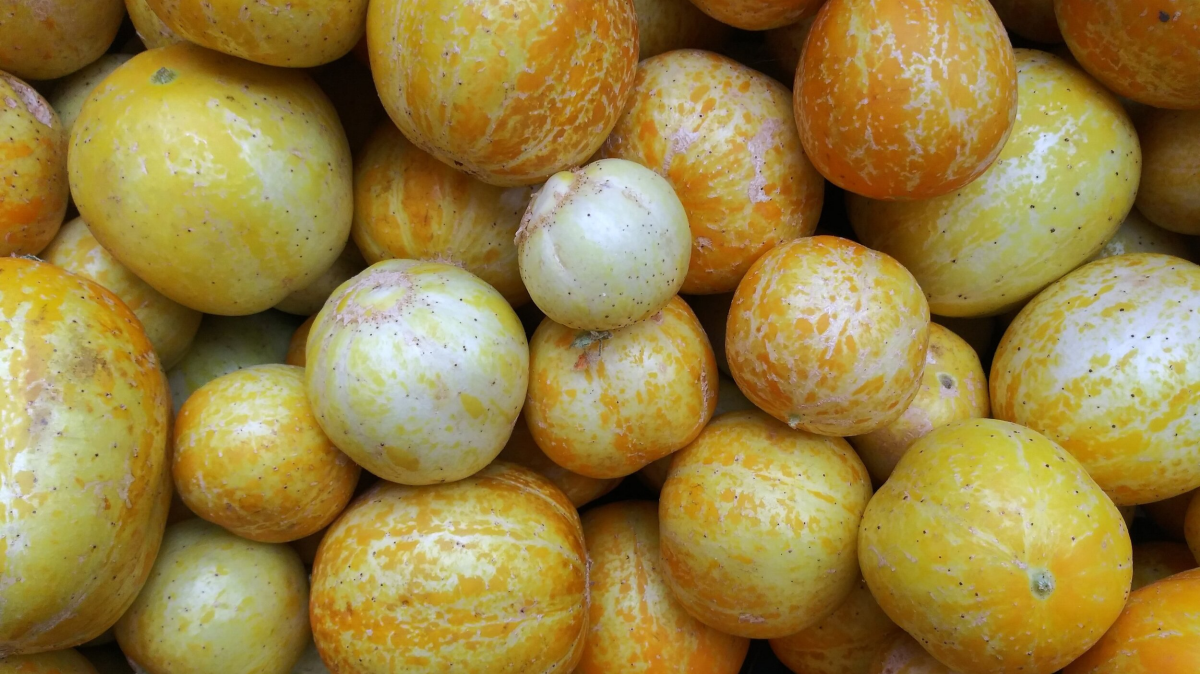
Perfect for Patios: Growing Lemon Cucumbers in Containers
Don’t have a big yard? No problem. Lemon cucumbers do surprisingly well in pots, as long as you give them what they need.
The key is pot size. You need at least a 5-gallon container, but to be frank, a 7 or 10-gallon pot is even better. This gives the roots enough room to spread out and holds more water. For soil, don’t use garden soil, which will get compacted and waterlogged. Use a quality potting mix, and I like to stir in a few big handfuls of compost for extra nutrients.
Heads up! Containers dry out WAY faster than garden beds. In the peak of summer, you might need to water your potted cucumber every single day. Just stick your finger an inch or two into the soil; if it feels dry, it’s time to water. You’ll also need to provide a small trellis or cage for it to climb right in the pot.

Planting: Getting Your Seeds in the Ground
You can either plant seeds directly in your prepared bed or start with young plants. I prefer starting from seed right in the garden because it avoids the shock of transplanting.
Direct Sowing Seeds
Timing is everything here. Cucumbers love warm weather, so the soil needs to be at least 65°F (18°C), and ideally a bit warmer. A common mistake is planting too early when the soil is cold and wet, which just causes the seeds to rot. A good rule of thumb is to wait about two weeks after your area’s last frost date.
I plant the seeds about half an inch deep. I space them about 6 inches apart to start, and once they sprout their first set of “true leaves,” I thin them out to their final spacing of about 18-24 inches apart. You can find excellent heirloom seeds from various online suppliers or sometimes at a well-stocked local nursery.
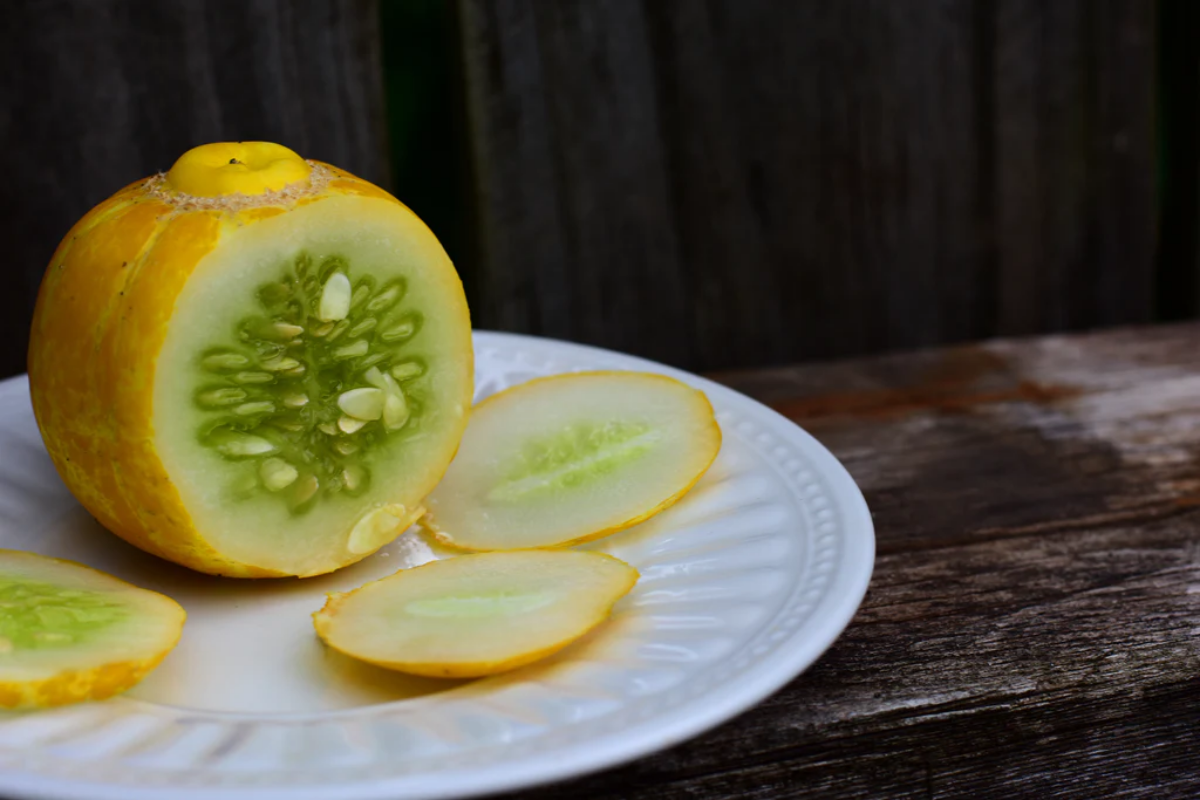
Starting with Transplants
If you have a shorter growing season, buying transplants can give you a nice head start. When you’re picking them out, look for plants with vibrant green leaves and no yellowing or spots. Pass on any that are already flowering in their tiny pot—they’re likely already stressed.
Before you plant them, you absolutely MUST “harden them off.” This just means getting them used to the outdoors gradually. For about a week, bring them outside for a few hours a day, starting in the shade and slowly giving them more sun and time each day. If you skip this, the sun and wind can scorch the leaves and stunt the plant permanently.
Support Systems: Why You Should Grow Vertically
Lemon cucumber plants are vines that will happily sprawl all over the ground. While you can let them do that, I strongly recommend growing them vertically on a trellis. It’s a total game-changer.
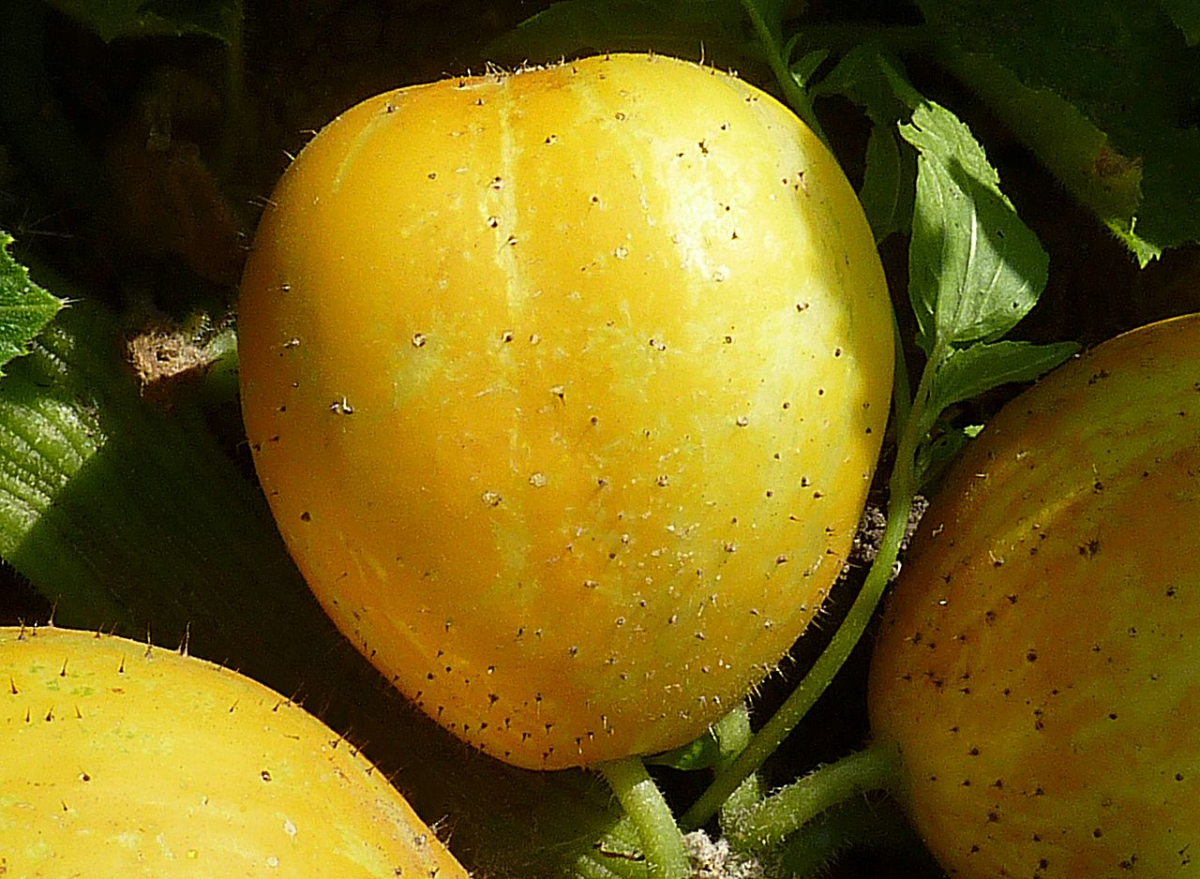
So, should you trellis or just let them sprawl on the ground? For me, it’s no contest. When vines sprawl, they take up a massive amount of garden space. The cucumbers end up sitting on damp soil, making them a prime target for slugs and rot. When you trellis, you use way less space, the fruit hangs clean and protected in the air, and you get much better airflow, which drastically cuts down on disease risk. It’s a bit more work to set up, but the payoff in plant health and harvest quality is enormous.
And you don’t need to spend a lot of money. Sure, a sturdy wire cattle panel (about $25 and it lasts forever) is a great investment. But you can get creative on a budget! I’ve seen fantastic setups using a simple A-frame built from scrap wood and some garden twine. Even an old wooden ladder or some sturdy bamboo poles tied into a teepee shape will work perfectly. As the vine grows, just gently weave the main stem onto the support to get it started.
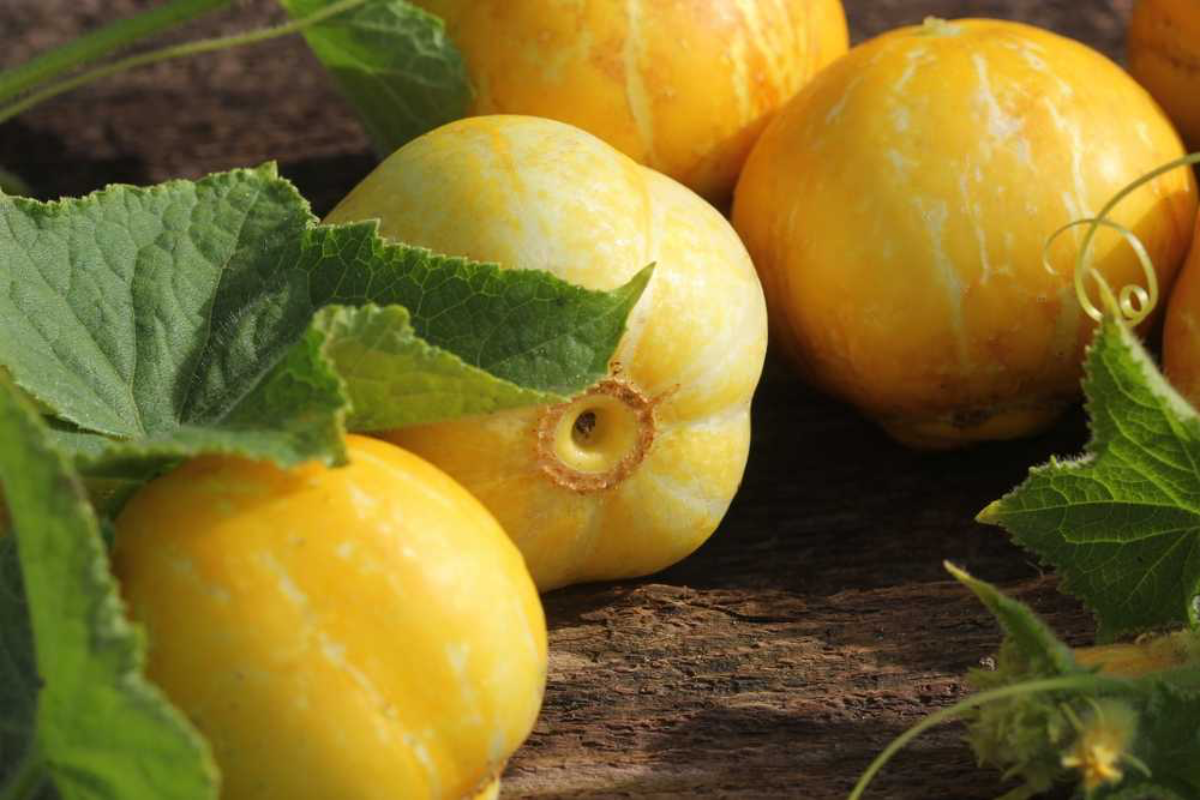
Proper spacing is crucial, whether on a trellis or not. Give each plant about 18-24 inches of its own space. It looks like a lot when they’re tiny, but they’ll fill it in fast. A single, happy plant on a trellis can easily produce 15-20 cucumbers over the season, so that extra room is well worth it!
Watering and Feeding: Fuel for a Great Harvest
Consistency is the name of the game. Weird watering schedules and improper feeding will stress the plant, leading to those bitter fruits we talked about.
How to Water the Right Way
The goal is to keep the soil consistently moist, like a wrung-out sponge, but never soggy. The best way to know is to just stick your finger in the soil. If it’s dry two inches down, it’s time to water.
And HOW you water is critical. Always water at the base of the plant, soaking the soil directly. Try to avoid sprinklers that get the leaves wet. Wet foliage, especially in the evening, is an open invitation for powdery mildew. I use soaker hoses, but a simple watering can works just as well. Water deeply and less often to encourage deep, resilient roots.
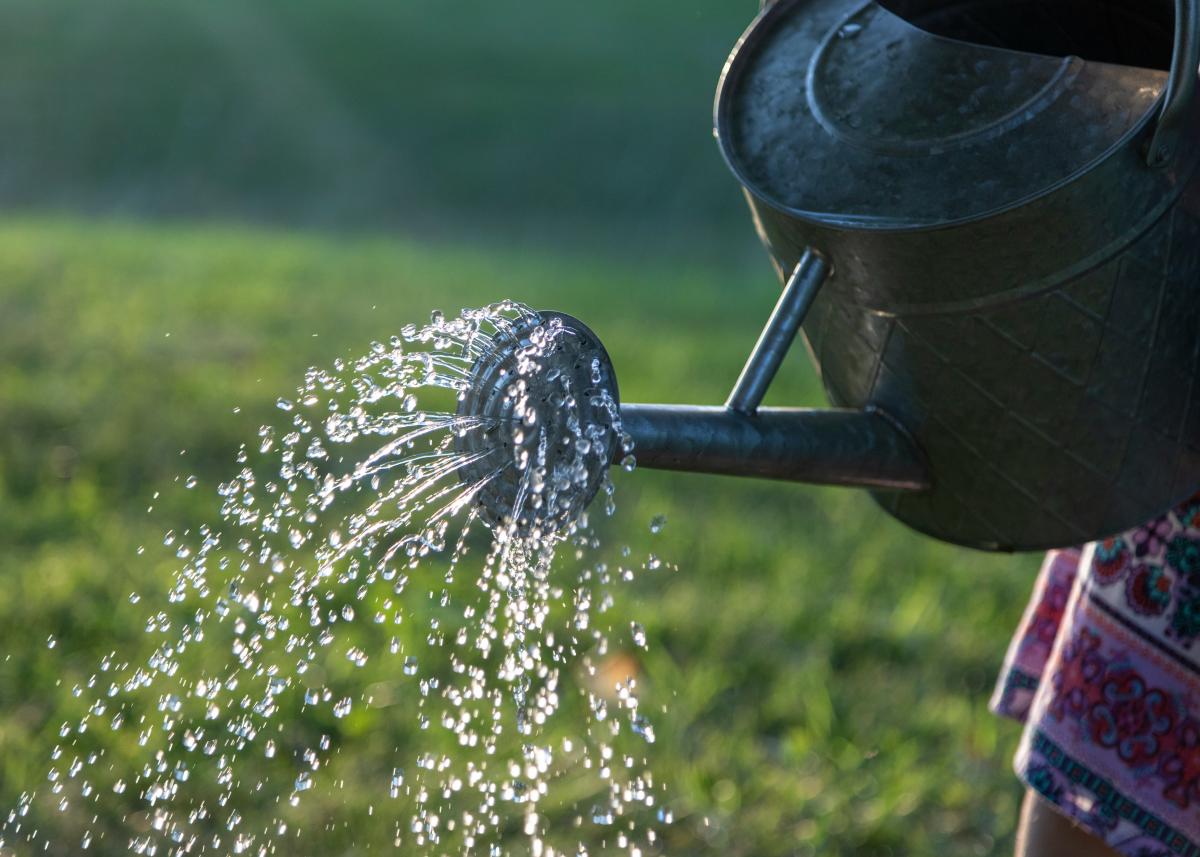
A Simple Feeding Schedule
The compost you added at the beginning is a great start, but these plants get hungry once they start making fruit. I use a liquid organic fertilizer, like fish emulsion or a compost tea, and follow a simple schedule:
- First Feeding: When the vines really start to take off and climb, about 3-4 weeks after planting.
- Second Feeding: As soon as you see the first tiny baby cucumbers forming behind the yellow flowers.
- Ongoing Feedings: Continue to feed them every 2-3 weeks throughout the main harvest season to keep them going strong.
Always dilute the fertilizer according to the package directions. More is not better here!
The Best Part: Harvesting Your Cucumbers
Picking your cucumbers at the right time is so satisfying. It also tells the plant to keep making more!
When to Pick
Look for a combination of color and size. A ripe lemon cucumber will be a bright, sunny yellow all over. If it’s still pale green, give it another day or two. If it’s starting to turn deep orange, it’s overripe, and the seeds will be tough. The perfect size is anywhere between a golf ball and a tennis ball (about 2-3 inches across). Let them get too big and they get seedy.
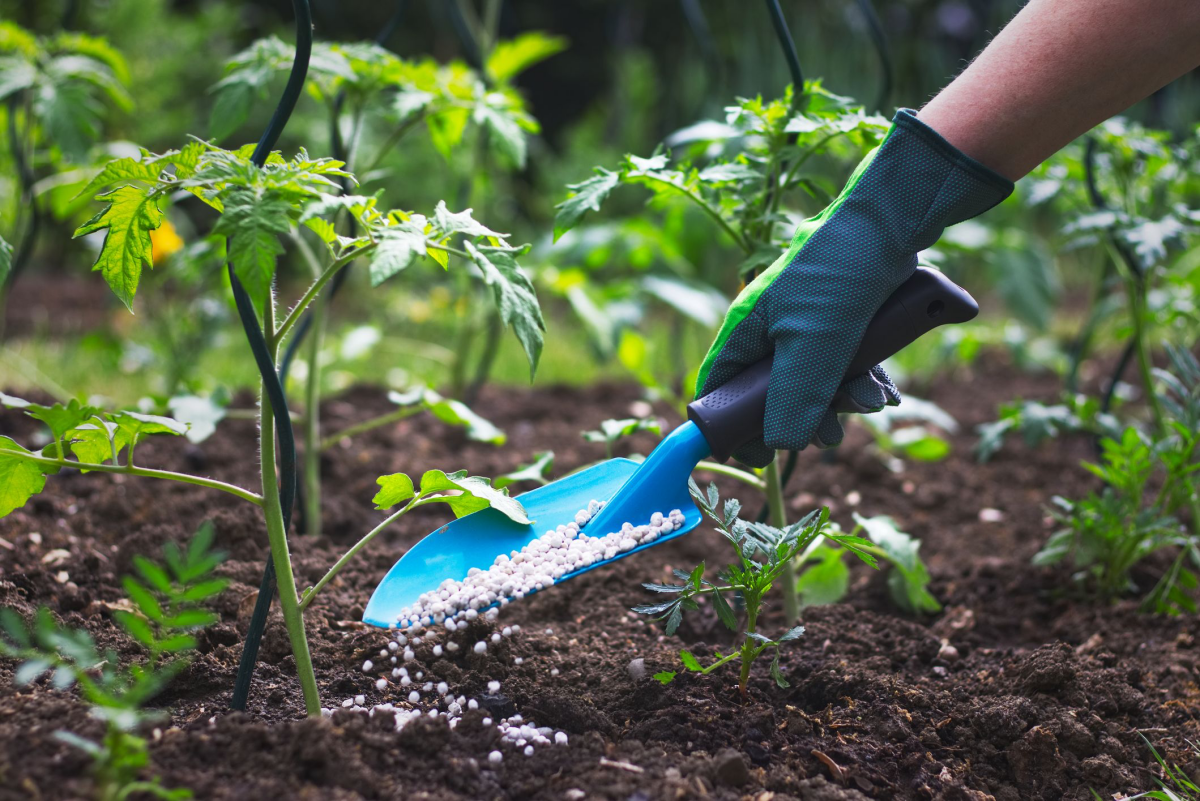
Always use scissors or pruners to cut the cucumber from the vine, leaving a little bit of stem attached. Don’t just pull it off, as this can damage the vine. Harvest every other day once they get going. If you leave an overripe cuke on the vine, the plant thinks its job is done and will stop making new ones.
My Super-Simple Refrigerator Pickle Recipe
Lemon cucumbers make the absolute BEST pickles. They stay incredibly crisp. Here’s a quick recipe that doesn’t require any canning equipment.
- Slice your lemon cucumbers into rounds or spears.
- Pack them into a clean glass jar with some fresh dill and a clove or two of garlic.
- In a saucepan, heat up a simple brine: 1 cup of white vinegar, 1 cup of water, and 1 tablespoon of salt. Heat just until the salt dissolves.
- Pour the warm brine over the cucumbers in the jar, leaving a little space at the top.
- Put the lid on, let it cool on the counter, and then stick it in the fridge. They’ll be ready to eat in a day and will last for a few weeks!
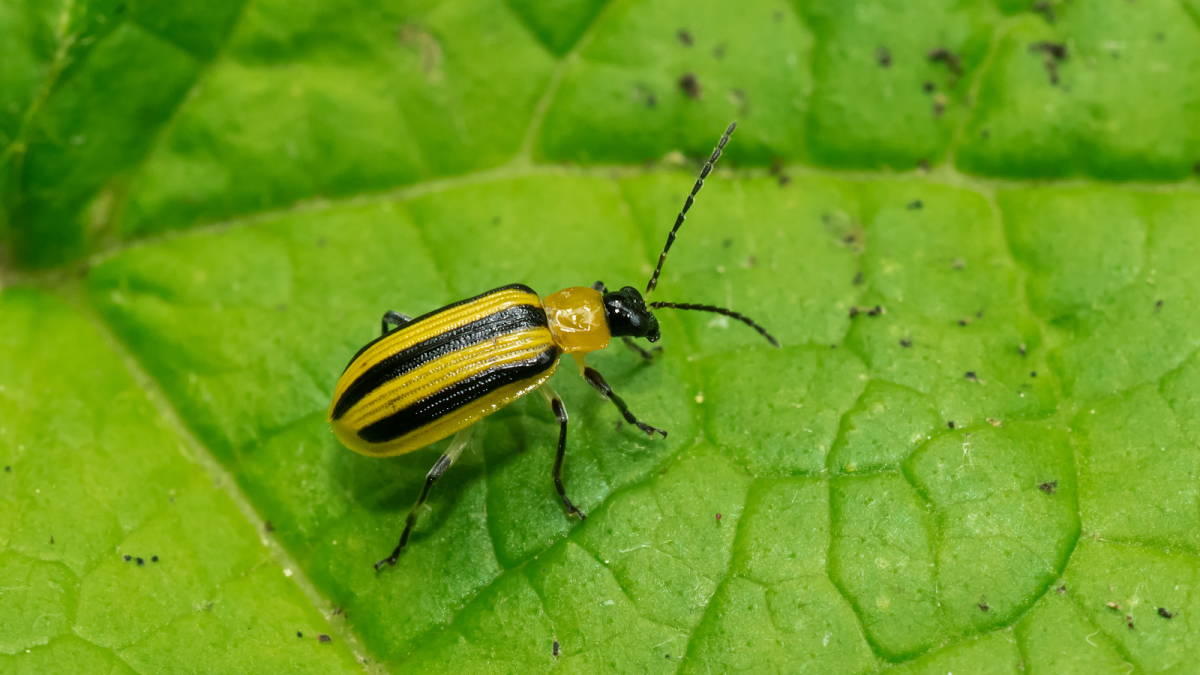
Troubleshooting Common Issues
Even with the best care, things can happen. Here’s how to handle the most common culprits.
- Pests: The biggest villain is the cucumber beetle. They chew on leaves and can spread a fatal disease. The best defense is to cover your young plants with a floating row cover. This is just a lightweight fabric blanket that lets in light and water but keeps bugs out. You can get a roll for about $15 at any garden center. If you see the beetles, the best solution is to hand-pick them and drop them in a bucket of soapy water.
- Diseases: Powdery mildew, that white dusty coating on the leaves, is the most common problem. The best cure is prevention: good spacing, full sun, and watering at the soil level. If it does show up, you can try removing the worst leaves to slow it down.
- No Fruit, Just Flowers?: If you see lots of flowers but no cucumbers are forming, you might have a pollination problem, often due to cool or rainy weather keeping the bees away. You can easily play the role of the bee yourself. Just take a small, soft paintbrush, gently swab the yellow powder (pollen) from the inside of a male flower (the ones with a plain stem), and dab it onto the center of a female flower (the ones with a tiny, swollen fruit at their base).
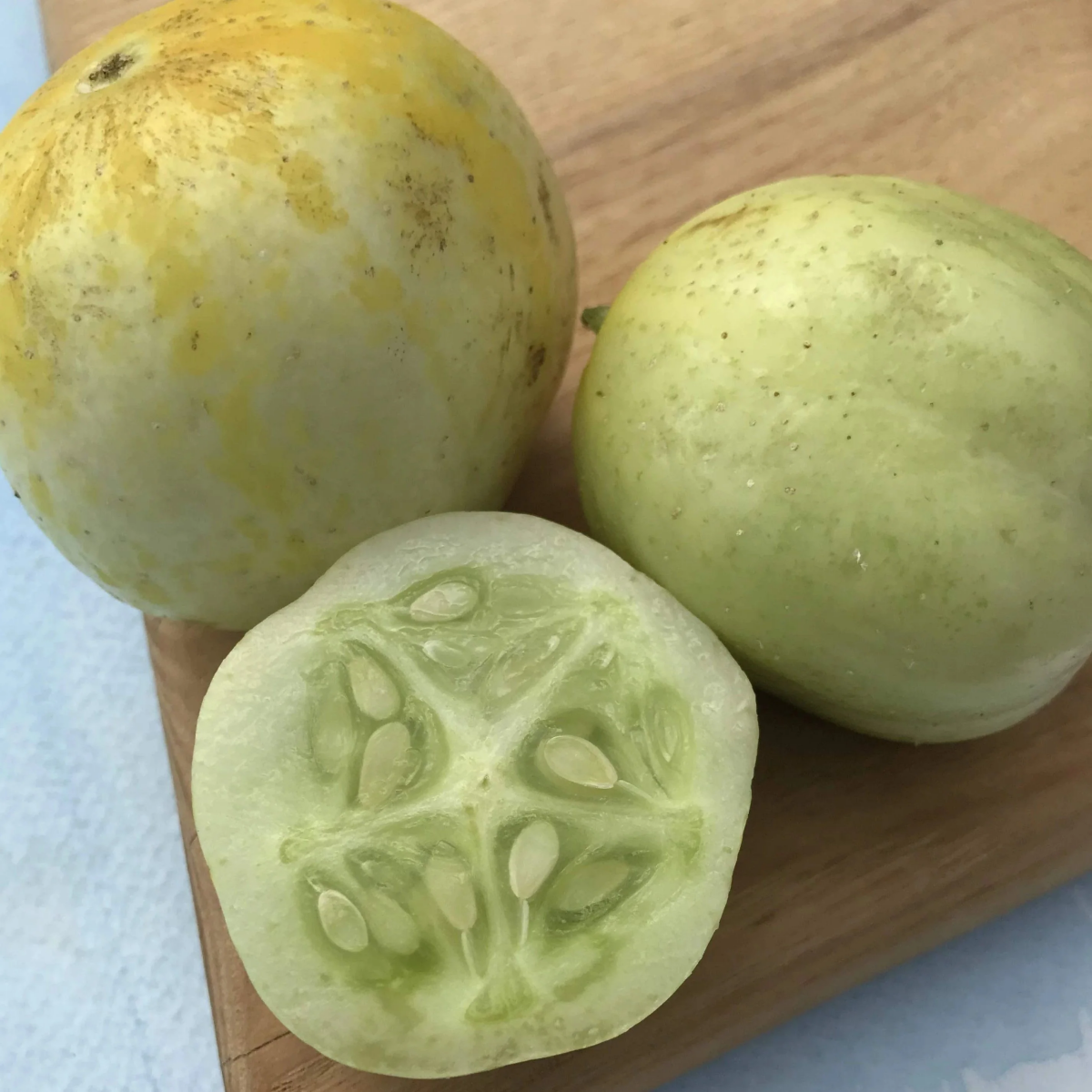
A Final Thought
Growing your own food is a skill you build through observation. These methods are your foundation, but your own garden will be your best teacher. Pay attention to your plants. Learn what they look like when they’re happy and healthy. The lemon cucumber is such a rewarding plant to grow, perfect for beginners but still loved by seasoned pros. It’s productive, forgiving, and absolutely delicious. Give it a try—you’ll be so glad you did.
Galerie d’inspiration

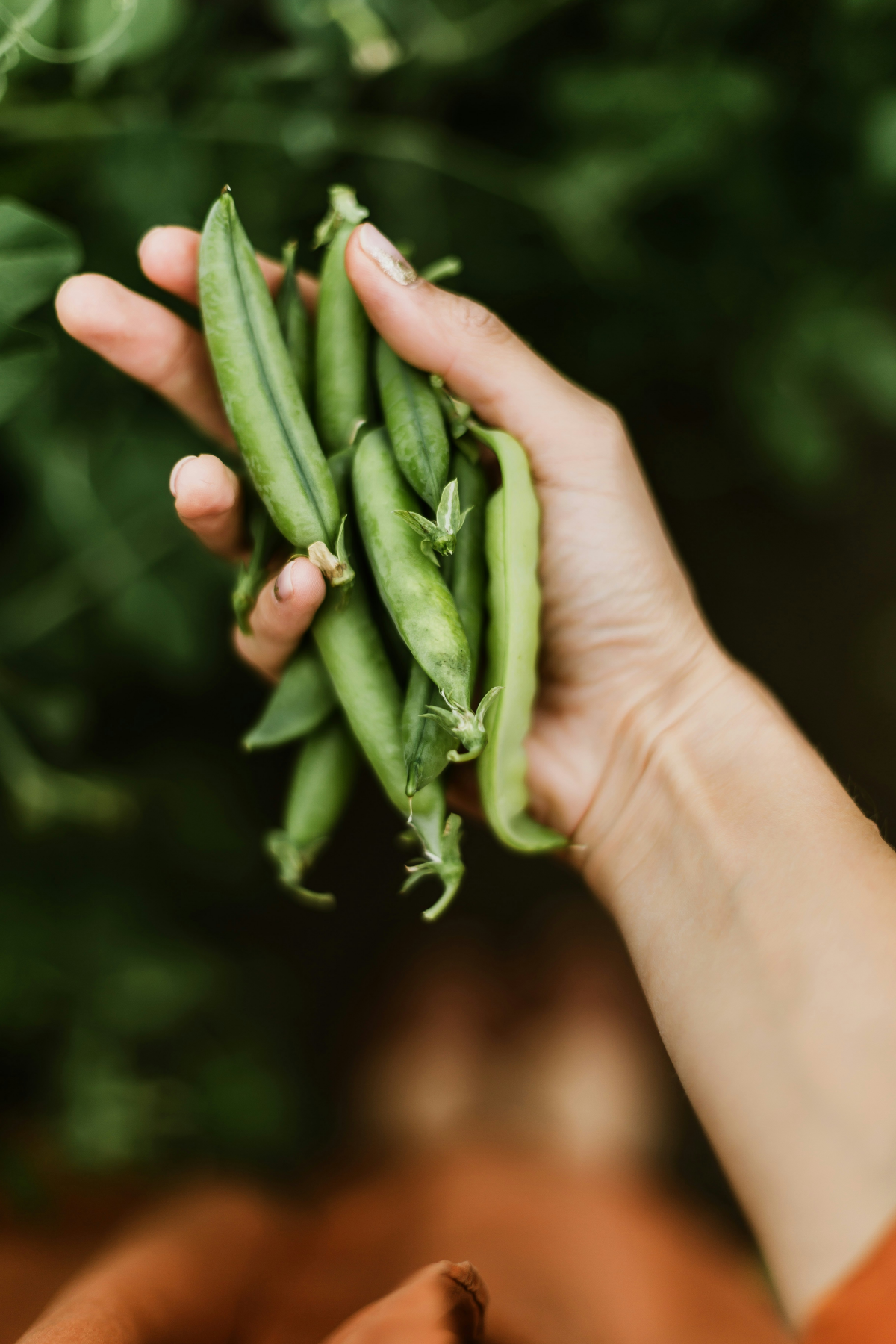
Give your lemon cucumber seedlings the best start with rich, well-draining soil. Before planting, I always work a generous amount of aged compost into the top 6-8 inches of my garden bed. A bagged compost like Black Kow or your own homemade supply will provide the slow-release nutrients these heavy feeders crave all season long.
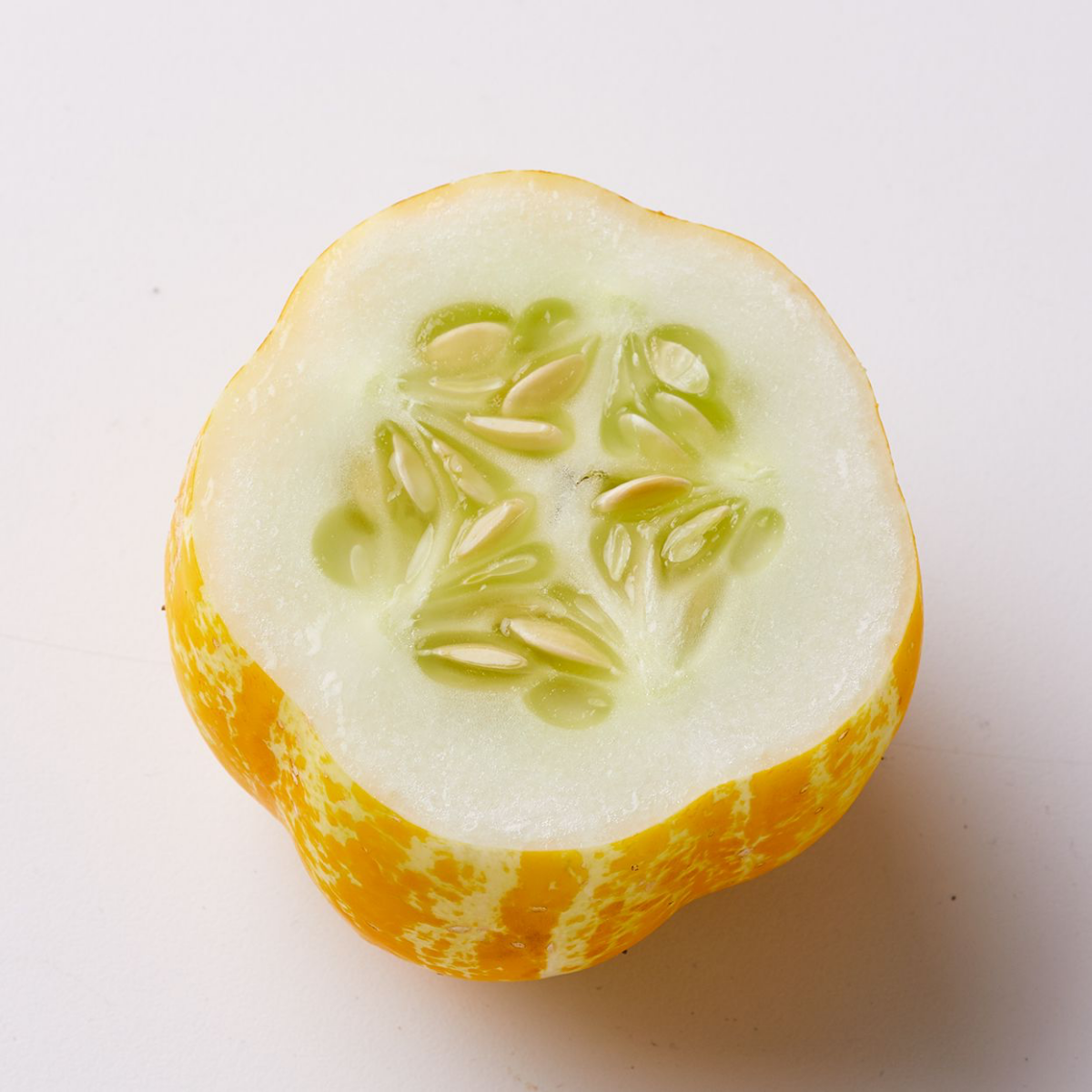
- Better Airflow: Lifting the vines prevents fungal diseases like powdery mildew, a common cucumber ailment.
- Cleaner Fruit: No more scrubbing dirt off your harvest; the cucumbers hang pristine and unblemished.
- Easier Picking: You can spot the ripe yellow orbs instantly without rummaging through a tangle of leaves on the ground.
The secret to a healthier, more productive plant? A simple trellis.
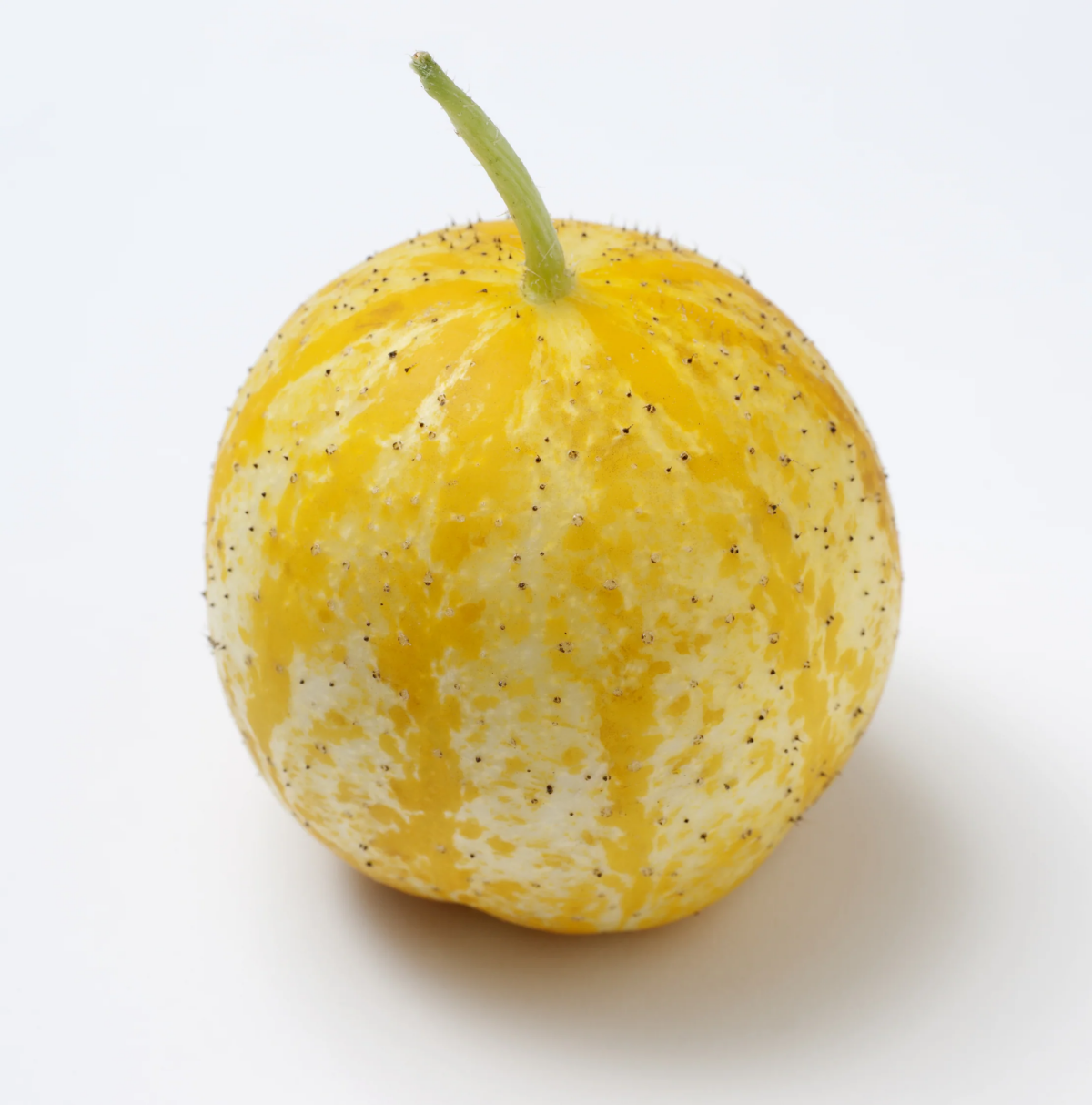
Can I grow lemon cucumbers in a pot?
Absolutely! They do surprisingly well in containers, which is perfect for patio or balcony gardeners. Choose a large pot, at least 5 gallons (about 20 liters), to give the roots enough space. You’ll need to be extra vigilant with watering, as containers dry out much faster than garden beds, and provide a small trellis for the vine to climb.
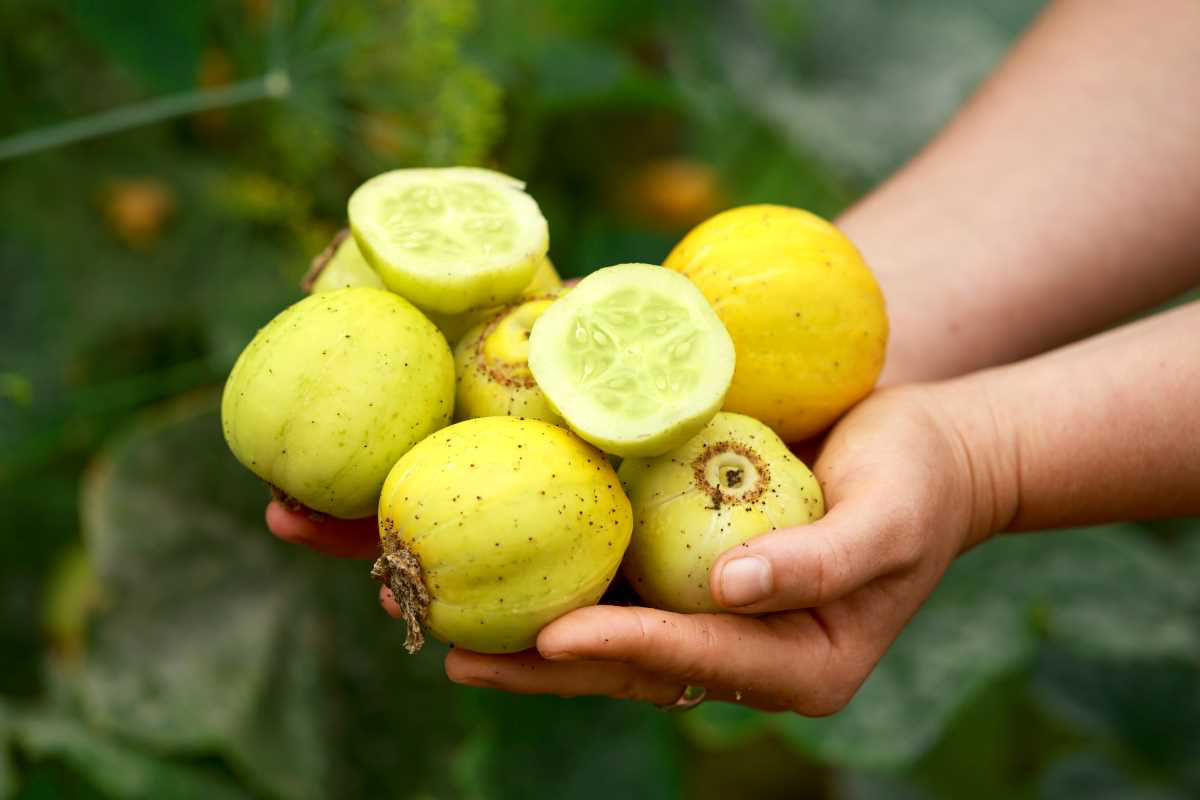
Heirloom seeds are a living connection to our past. Each one carries a story of a time and place, a family, or a culture.
By choosing an heirloom like the lemon cucumber, introduced in 1894, you’re not just growing food; you’re becoming a steward of agricultural history. These are the varieties our great-grandparents grew, saved for their reliability and flavor long before industrial hybrids existed.
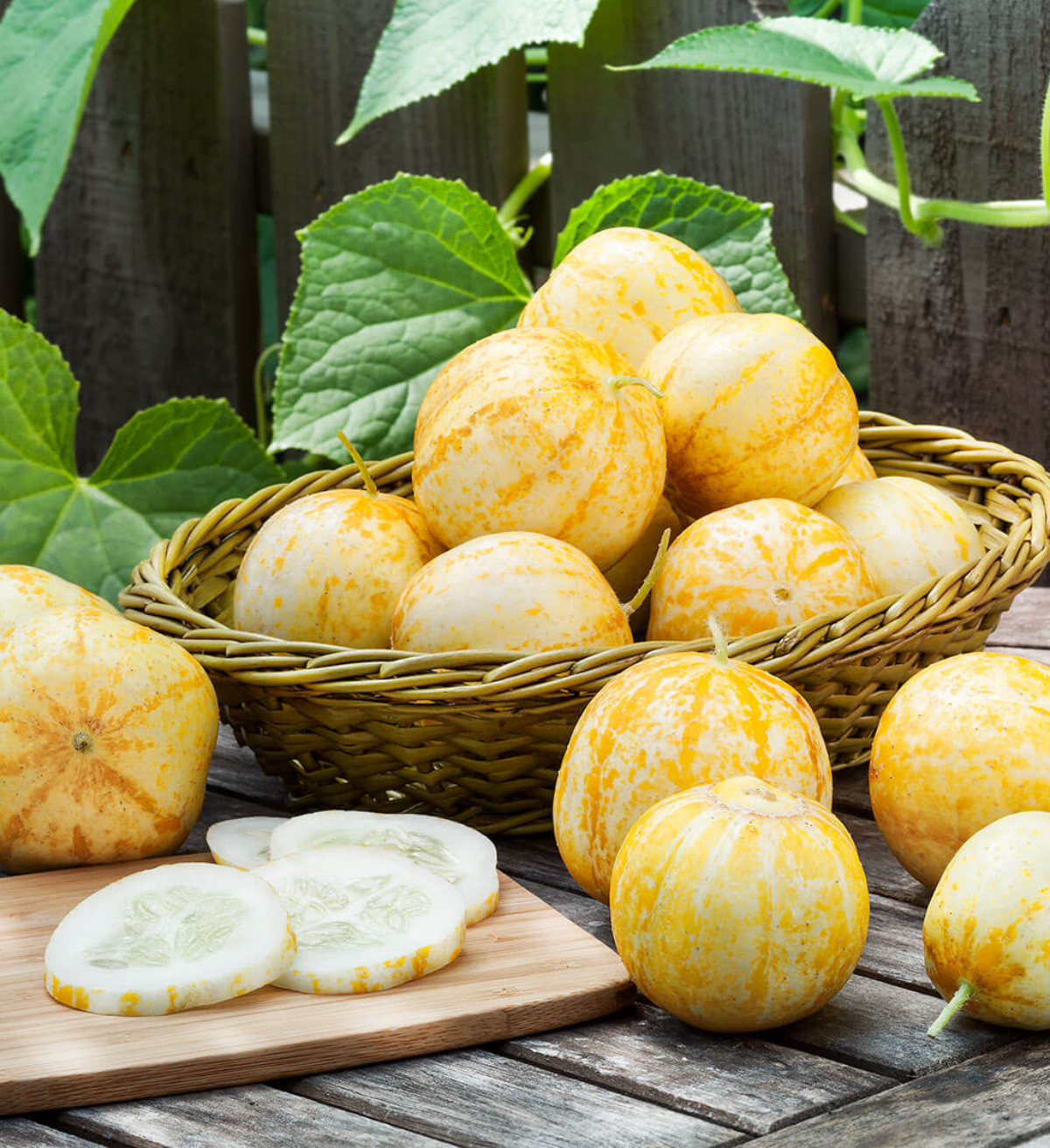
Important: Don’t let them get too big! The ideal lemon cucumber is picked when it’s the size and color of a lemon, about 2-3 inches in diameter. If you let them grow to the size of a tennis ball or get a deep orange hue, the skin will be tough and the inside will be full of hard seeds. Frequent picking encourages the plant to produce more fruit.
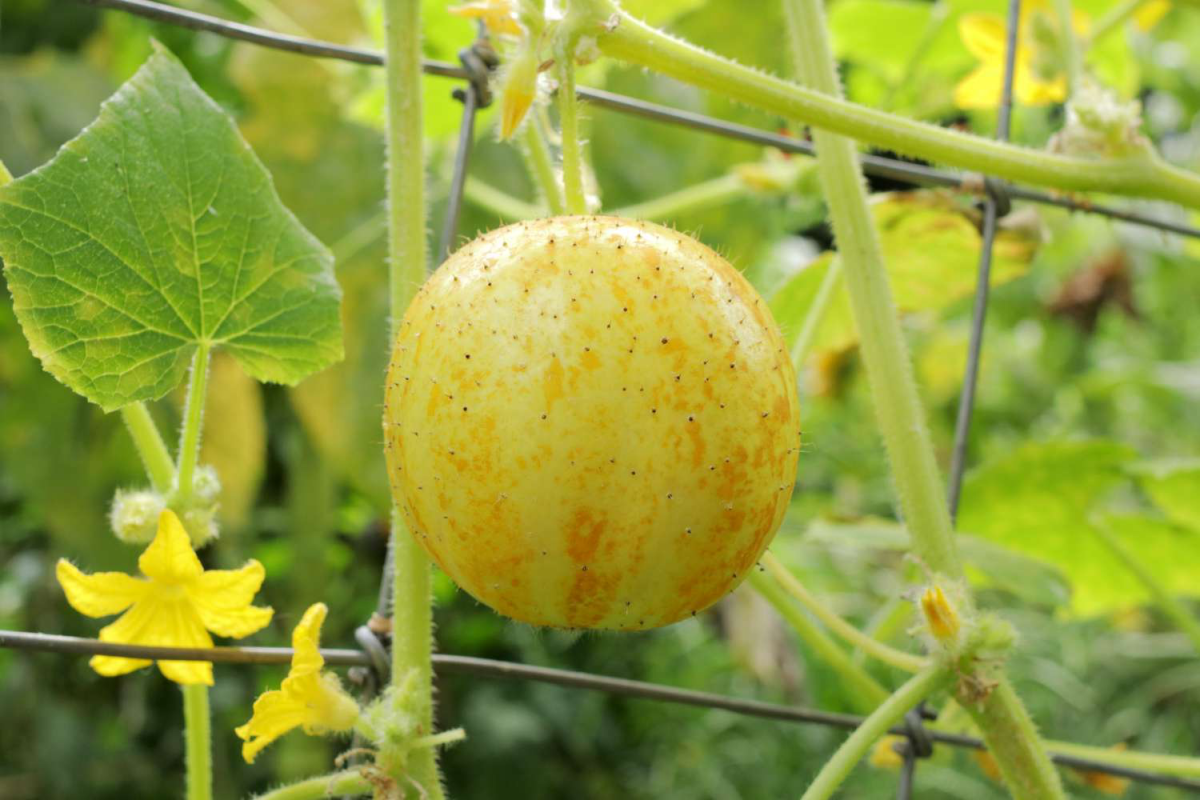
One of the great joys of growing lemon cucumbers is companion planting. Tuck these friendly plants nearby to create a thriving little ecosystem:
- Borage: This herb is said to deter cucumber beetles and attract beneficial pollinators.
- Nasturtiums: A great trap crop for aphids, luring them away from your cucumbers.
- Marigolds: Their scent can help confuse pests and their roots may deter nematodes in the soil.
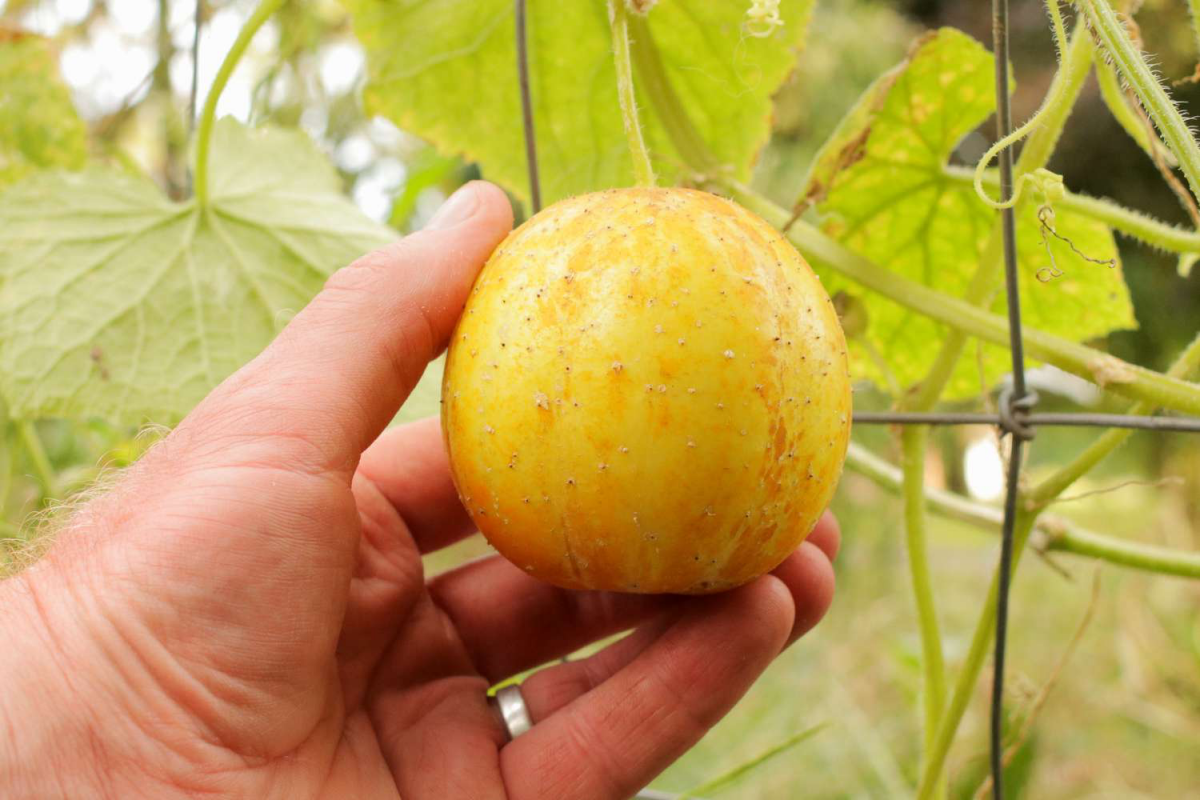
Soaker Hose: Delivers water directly to the soil at the base of the plant. This keeps the leaves dry, significantly reducing the risk of powdery mildew.
Overhead Sprinkler: Wets the entire plant, and damp leaves are an open invitation for fungal diseases. Much of the water also evaporates before it even reaches the roots.
For happy, healthy cucumbers, a soaker hose is the clear winner.
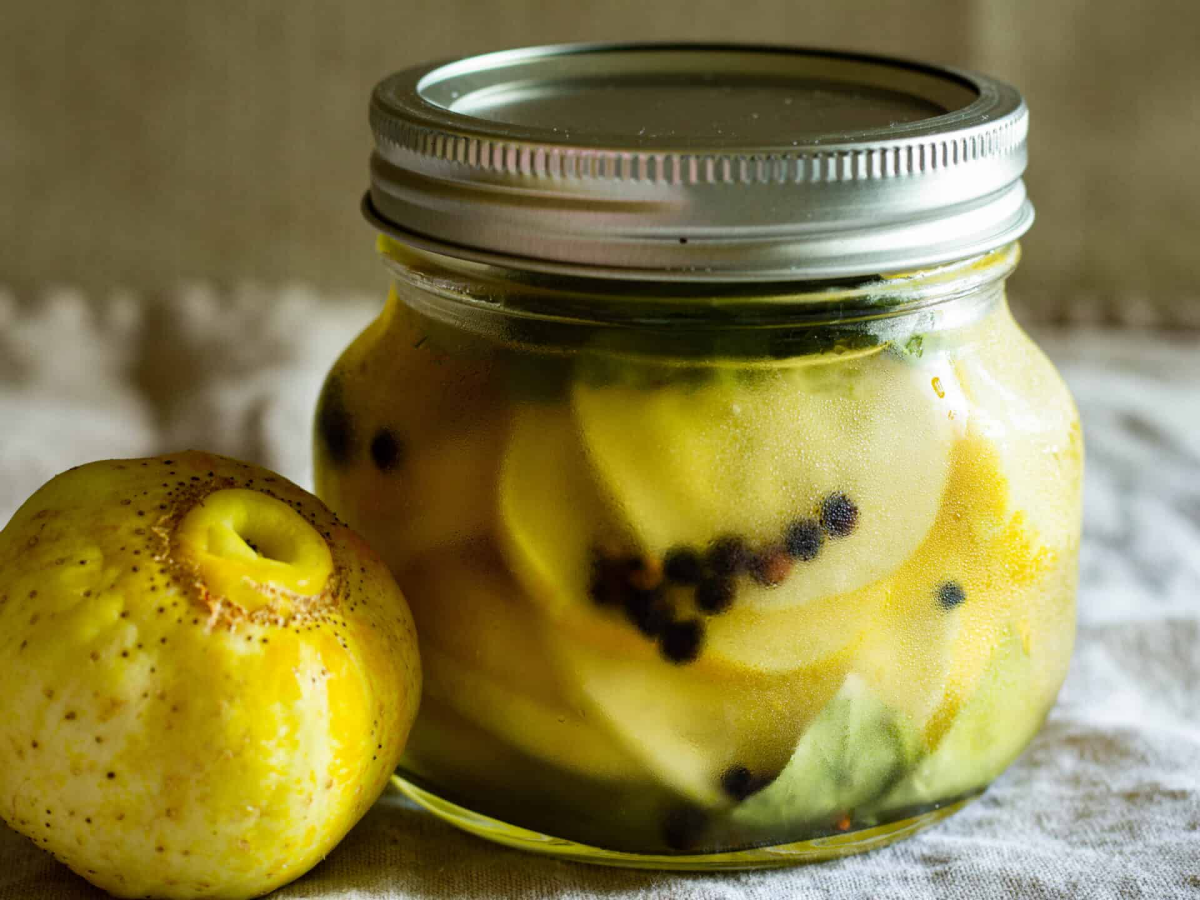
The slight fuzz you might notice on a young lemon cucumber is perfectly normal. It’s a characteristic of many cucumber varieties, especially on new growth. This delicate down easily rubs off with a gentle wash or even just by hand right after picking. It’s a sign of a fresh, just-harvested fruit!
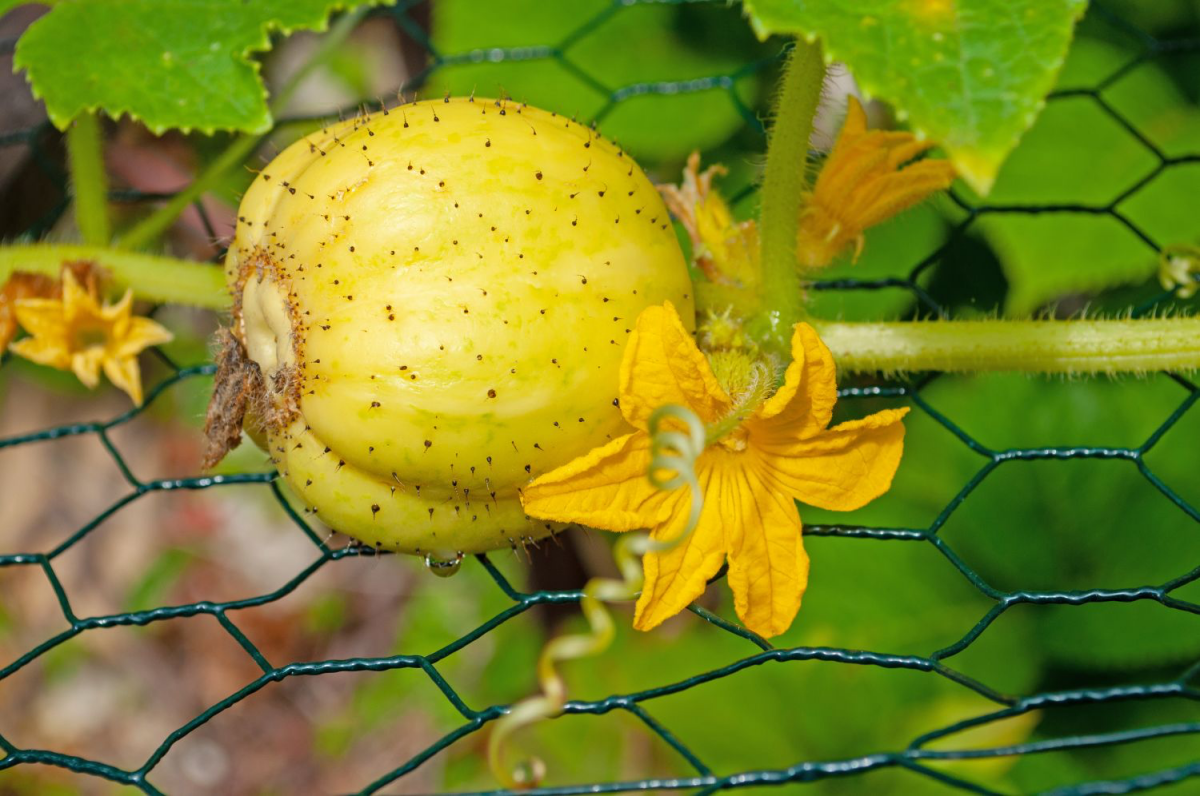
Did you know? Cucumbers are composed of about 96% water.
This simple fact is the key to understanding their needs. That high water content is what makes them so crisp and refreshing, but it also means the plant must have a consistent, reliable source of moisture to produce juicy, non-bitter fruit. Letting the soil dry out completely, even once, can stress the plant and ruin the flavor of your harvest.
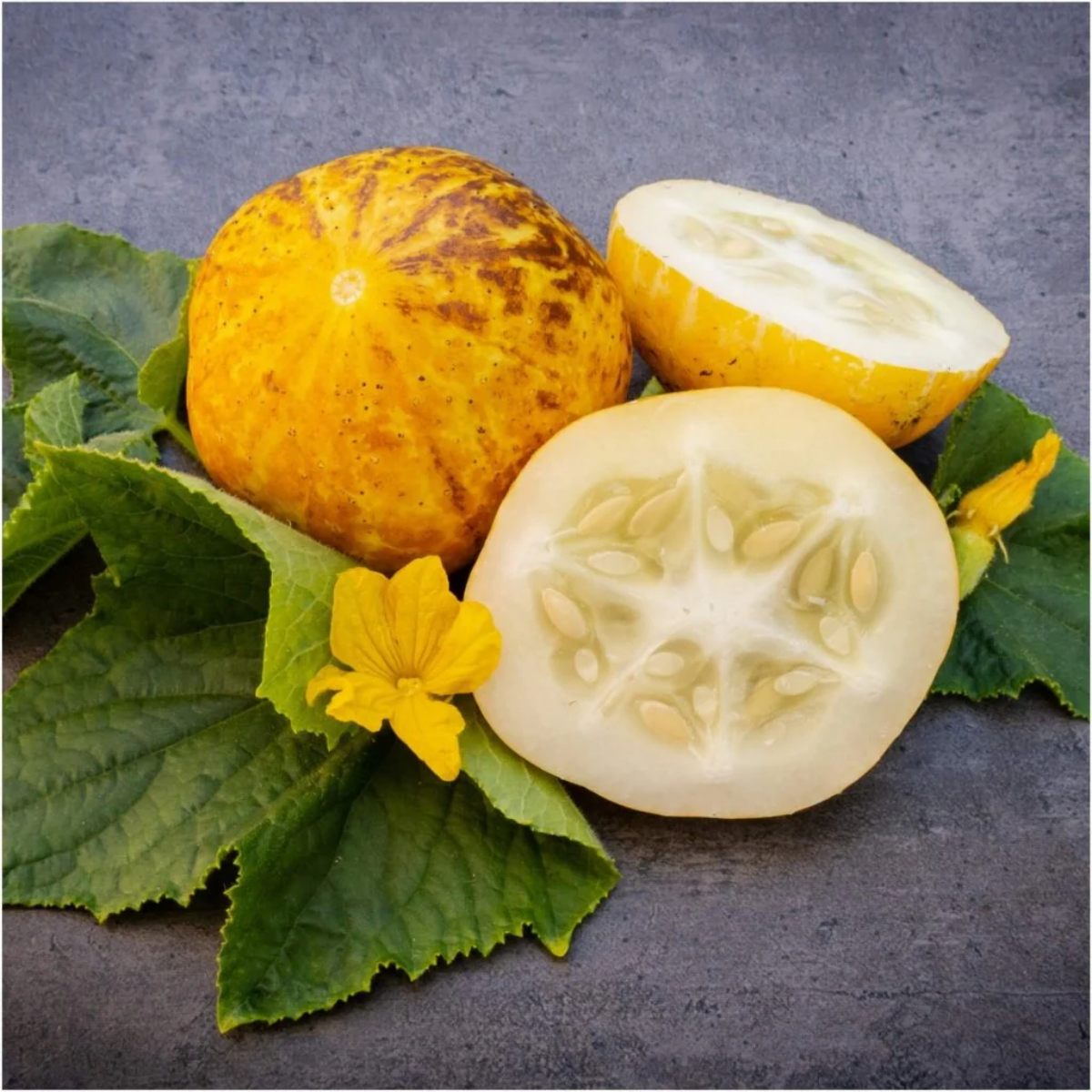
To keep the delicate flavor profile of lemon cucumbers front and center, simple preparations are best. For an instant, refreshing appetizer, slice one thinly and arrange the rounds on a platter. Drizzle with a high-quality olive oil, a squeeze of actual lemon juice, a sprinkle of flaky sea salt, and some freshly torn mint or dill. It’s a perfect taste of summer.
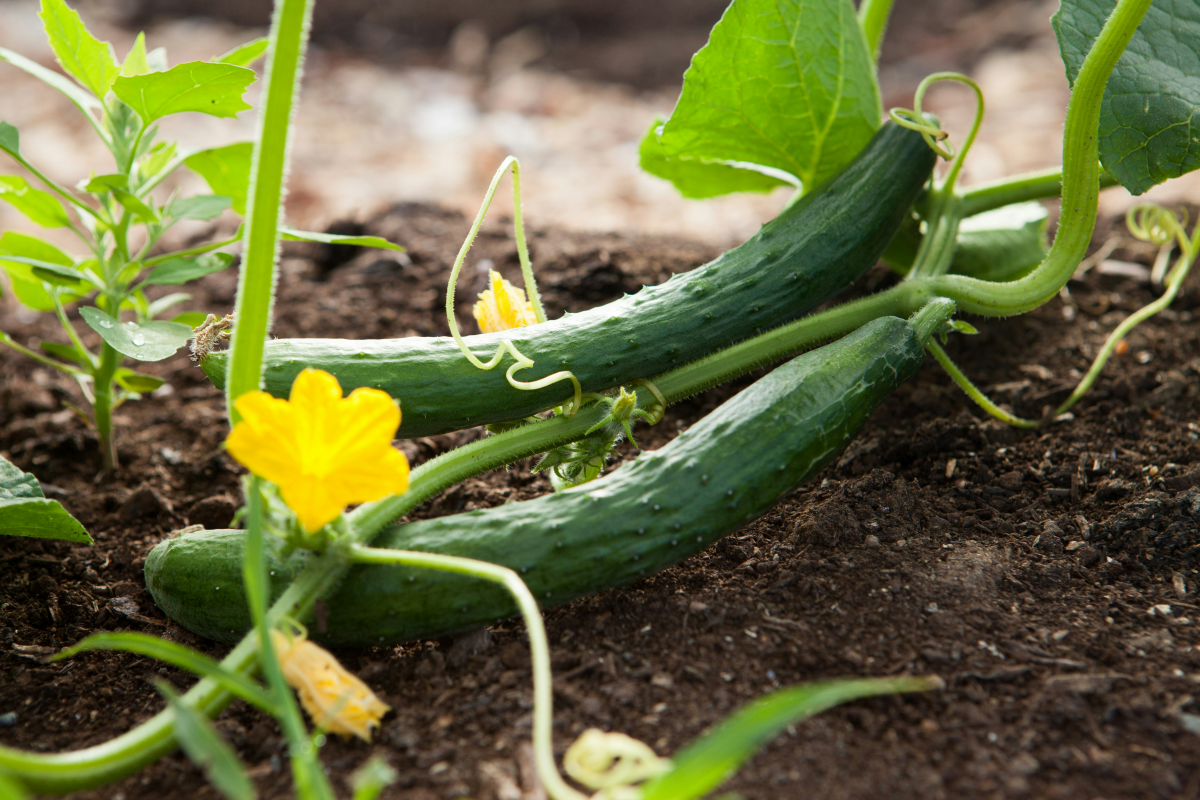
Want to see a magic trick for your next seed order? Look beyond the usual. If you love the crisp, mild nature of the lemon cucumber, you might also enjoy other heirloom varieties from suppliers like Baker Creek or Seed Savers Exchange.
- Poona Kheera: An Indian heirloom that starts pale yellow and turns a russet brown, staying crisp and juicy at every stage.
- Dragon’s Egg: A creamy white, egg-shaped cucumber with a sweet flavor, similar in size to the lemon variety.
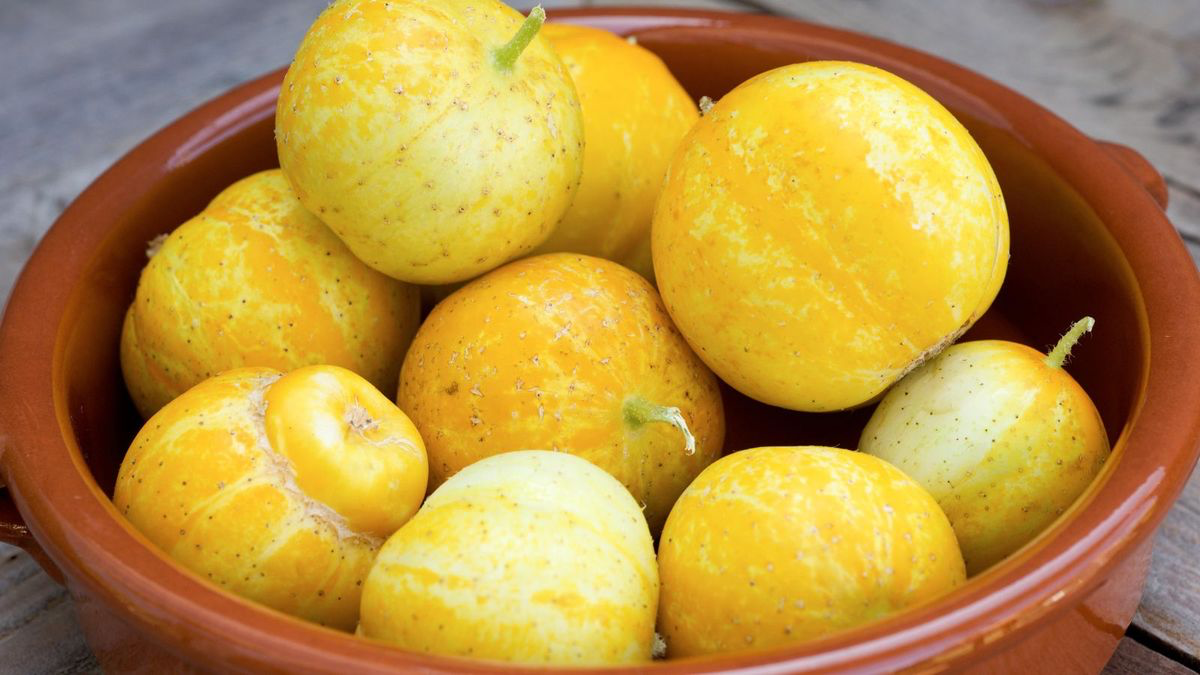
There’s nothing quite like picking a lemon cucumber warmed by the afternoon sun. The skin is smooth and taut, the orb fits perfectly in your palm, and as you twist it from the vine, it releases a faint, green, almost melon-like scent. It’s a small, satisfying moment that connects you directly to your garden and your food.
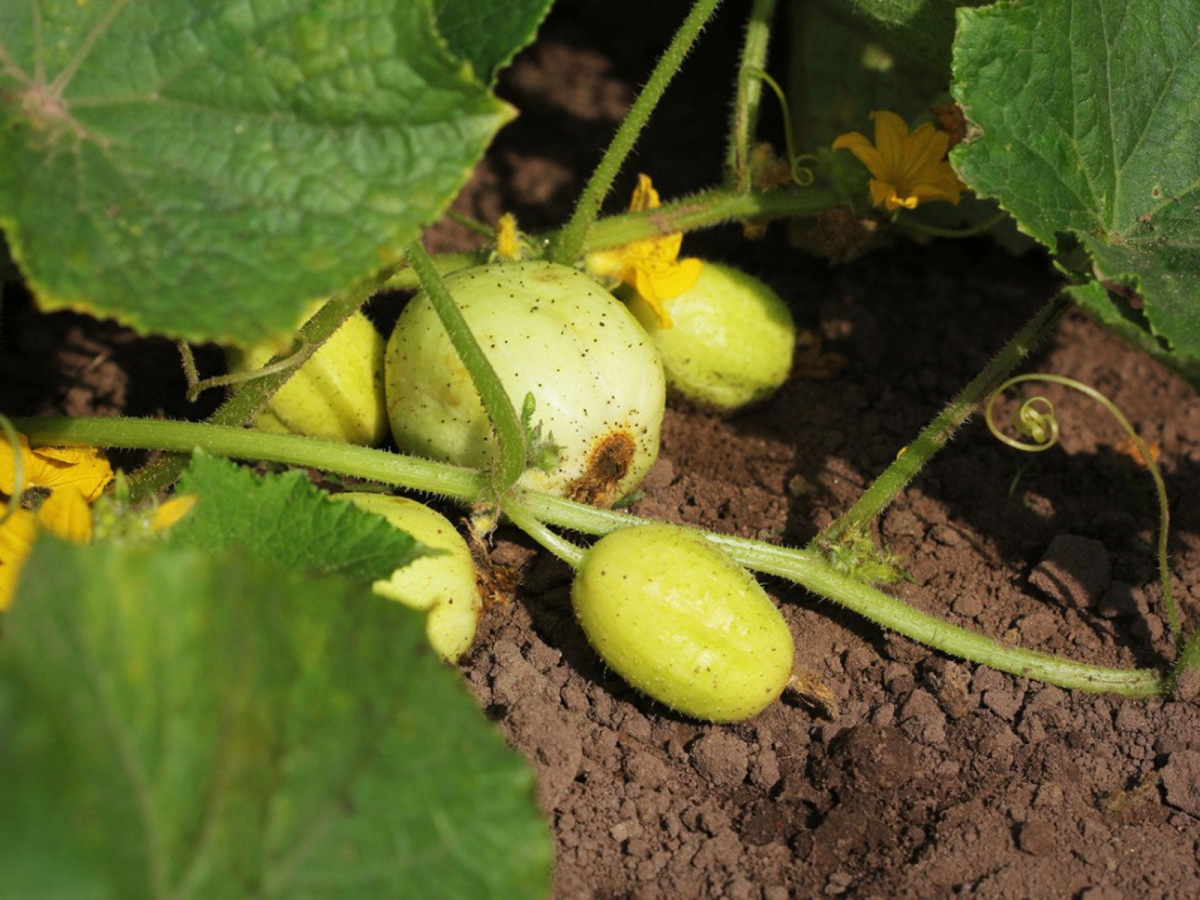
A common mistake: over-fertilizing with nitrogen. While essential for leaf growth, too much nitrogen will give you a gorgeous, massive green vine with very few flowers or fruit. Once the plant is established, switch to a fertilizer lower in nitrogen and higher in phosphorus and potassium (the ‘P’ and ‘K’ in N-P-K) to encourage blooming and fruit development.
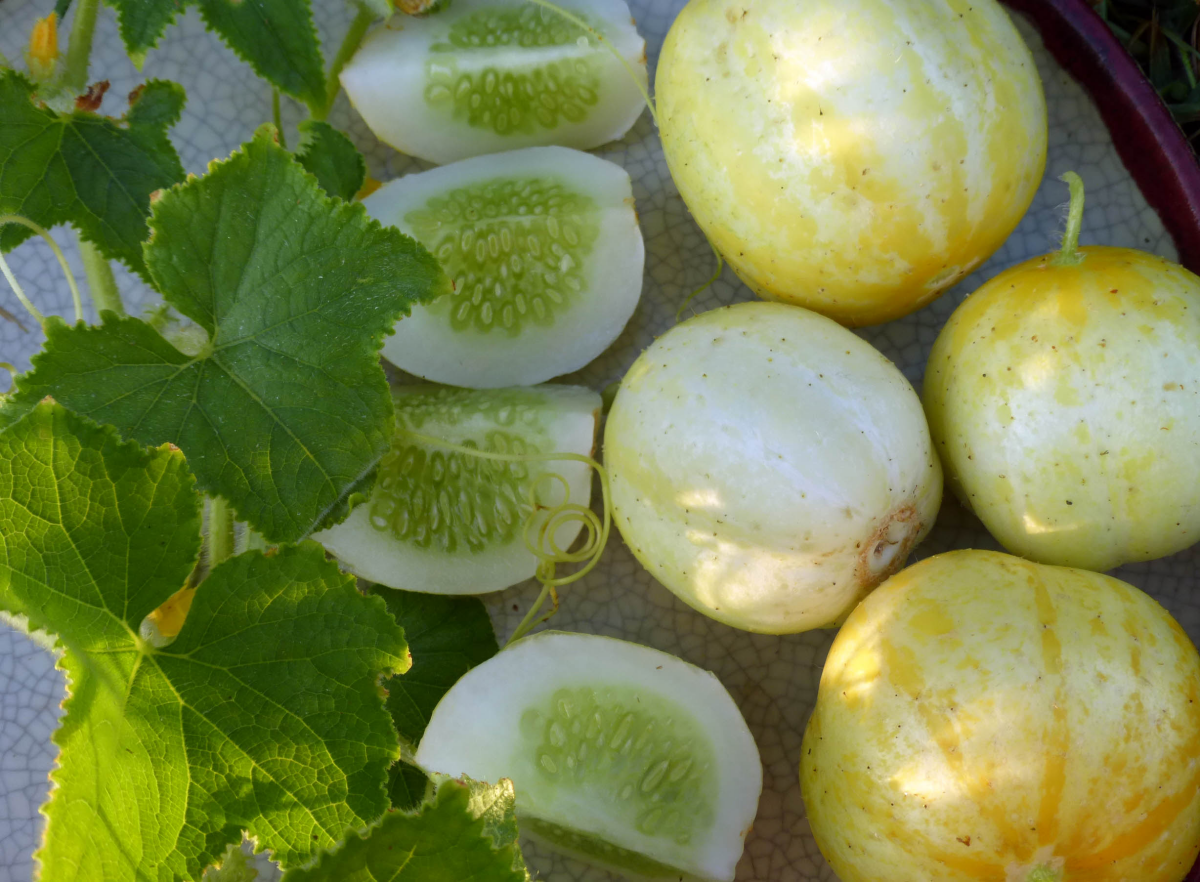
Create your own spa water in seconds. It’s a fantastic way to use up a bumper crop and stay hydrated.
- Thinly slice one washed lemon cucumber.
- Add the slices to a pitcher of cold water.
- Toss in a few sprigs of fresh mint.
- Let it infuse in the refrigerator for at least an hour before serving.
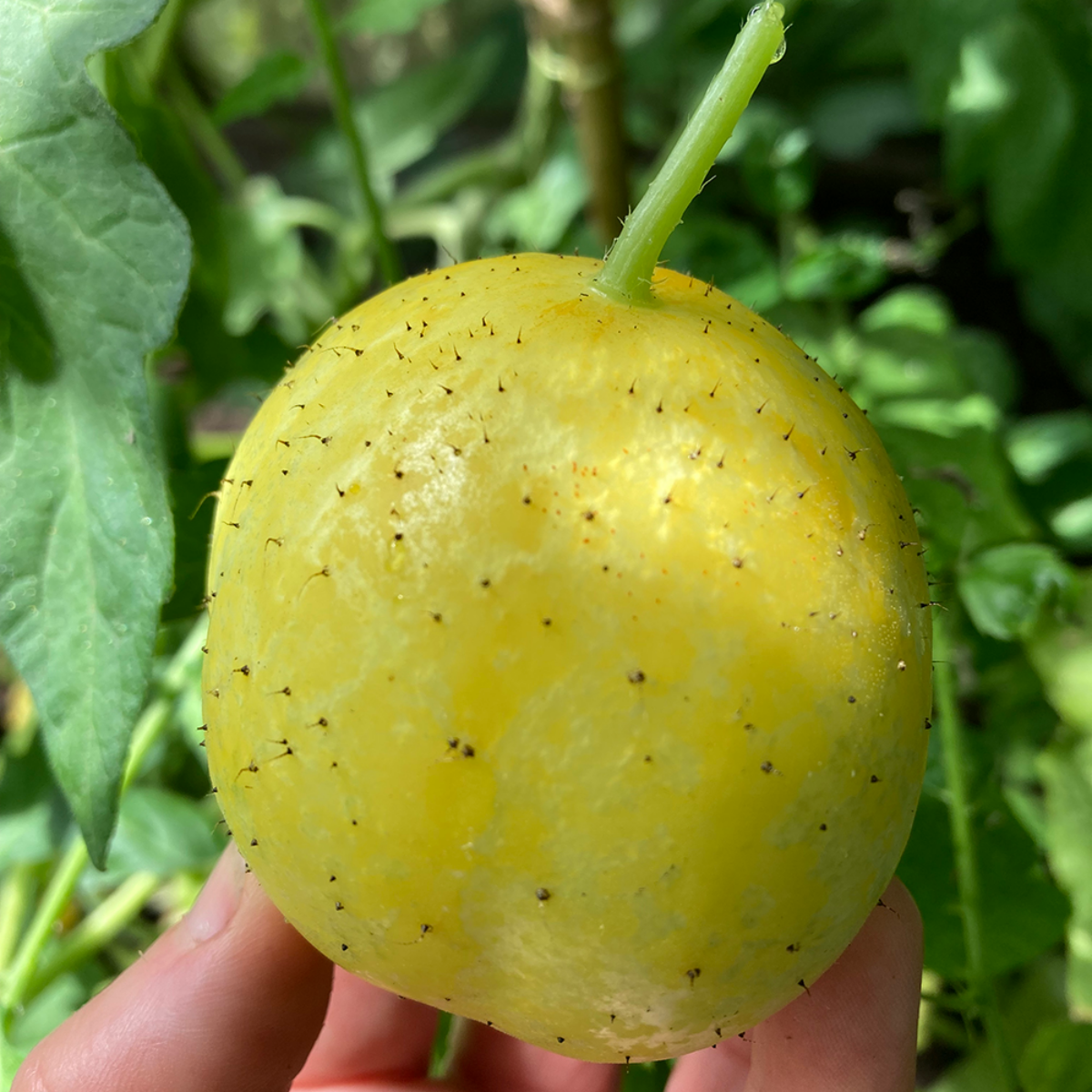
Worried about pests but want to stay organic?
Neem oil is a gardener’s best friend. Mixed according to the package directions and sprayed on the leaves (avoiding blossoms), it can disrupt the life cycle of common pests like aphids and cucumber beetles. For a proactive approach, attract beneficial insects like ladybugs and lacewings by planting dill and yarrow nearby—they are natural predators of many cucumber pests.

You don’t need expensive gear to harvest. While a good pair of pruners like the Felco F-2 gives a clean cut, a sharp pair of kitchen scissors or even a pocketknife will do the job just fine. The goal is to make a clean snip on the stem, leaving a small piece attached to the cucumber, rather than yanking the fruit, which can damage the vine.
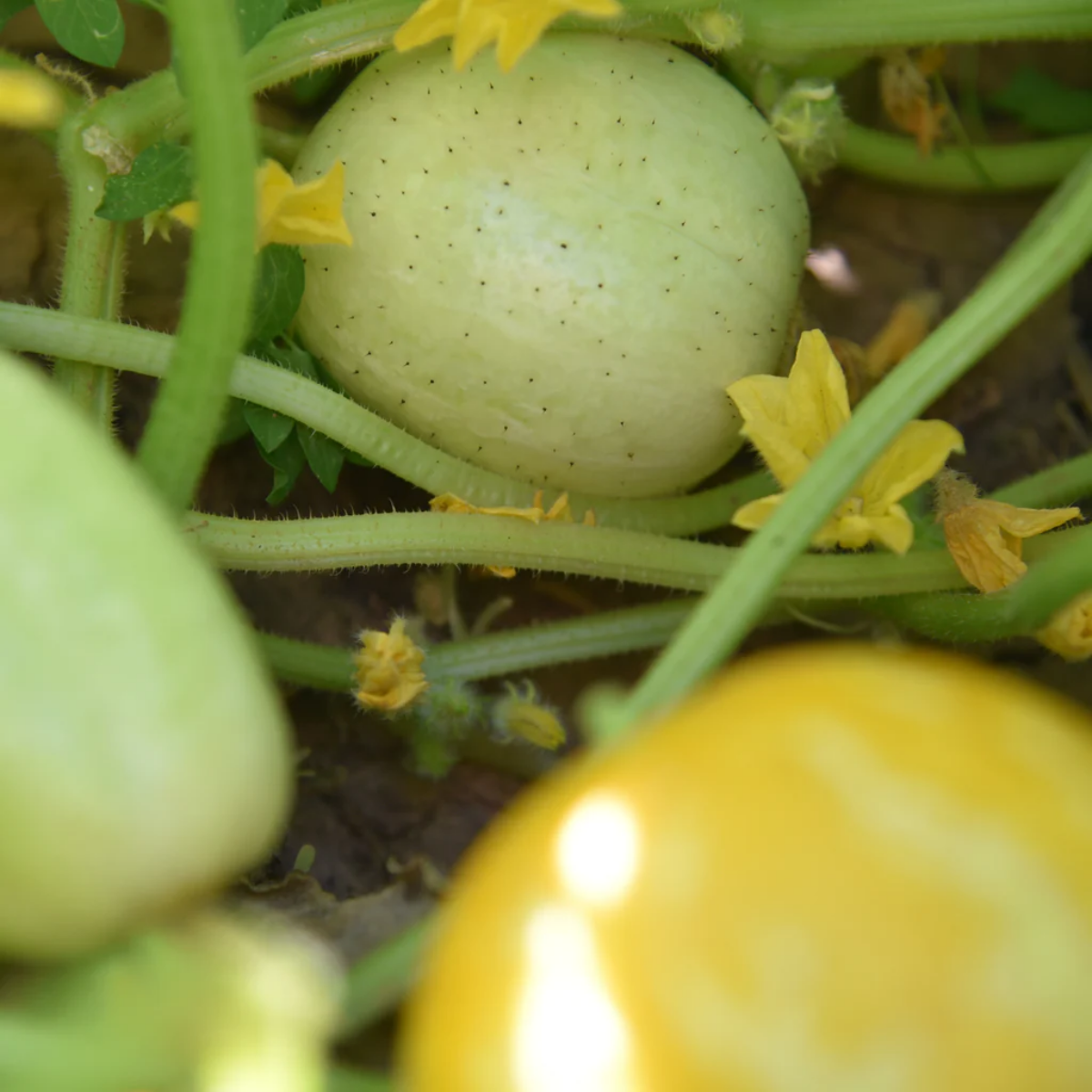
Want to save seeds for next year? It’s easy with an open-pollinated heirloom like this one. First, let one or two perfect-looking cucumbers fully ripen on the vine until they are deep yellow-orange and soft. Then, scoop the seeds into a jar, add a little water, and let them ferment for 2-3 days. This process removes the gelatinous coating. Finally, rinse the seeds thoroughly, discard any that float, and let the good ones dry completely on a paper towel before storing.
- Reduced disease pressure from soil splash-back.
- Perfectly shaped, straight fruit.
- A significant increase in your total harvest weight.
The key to all these benefits? Consistent watering delivered directly to the plant’s roots.










